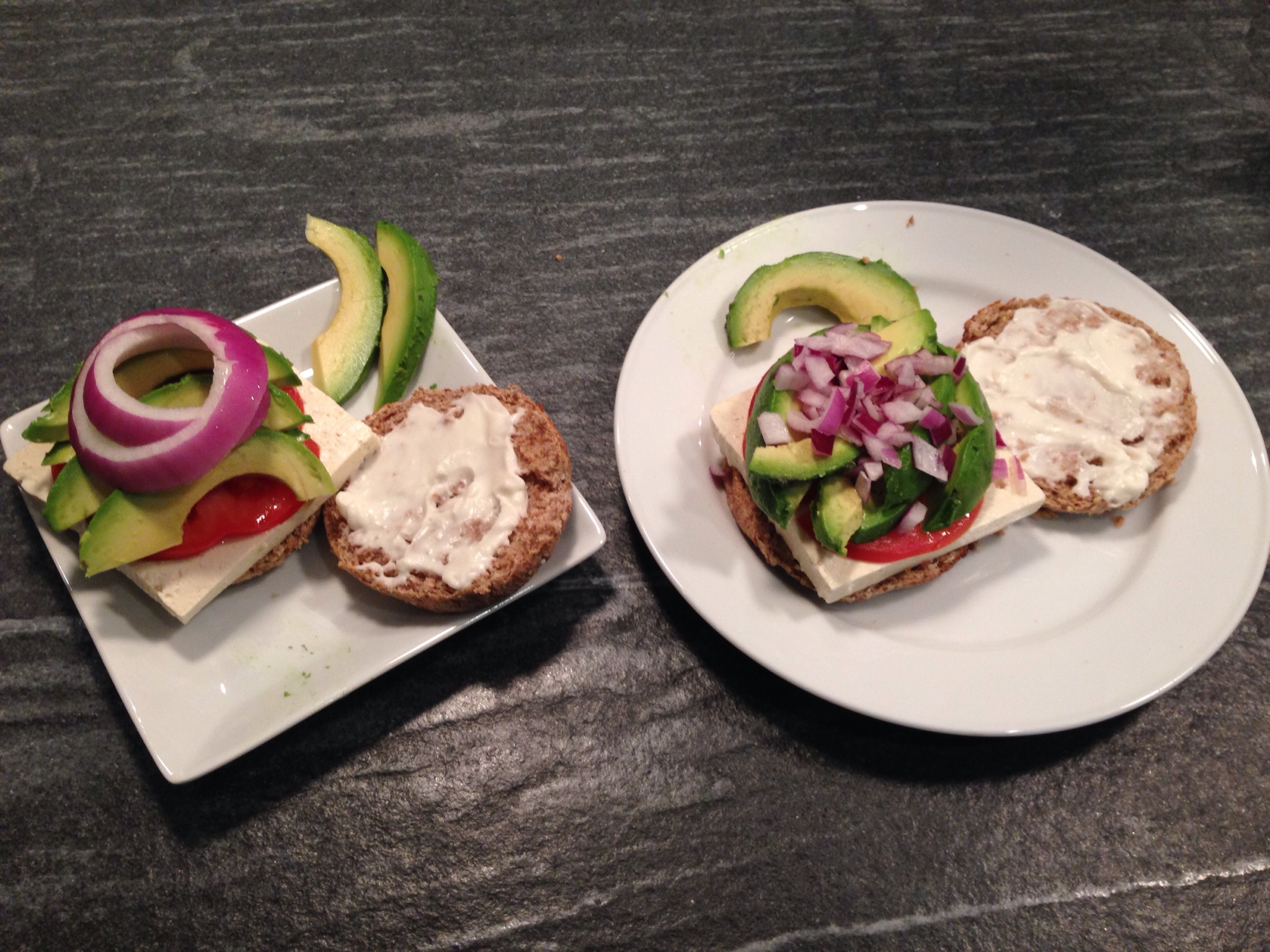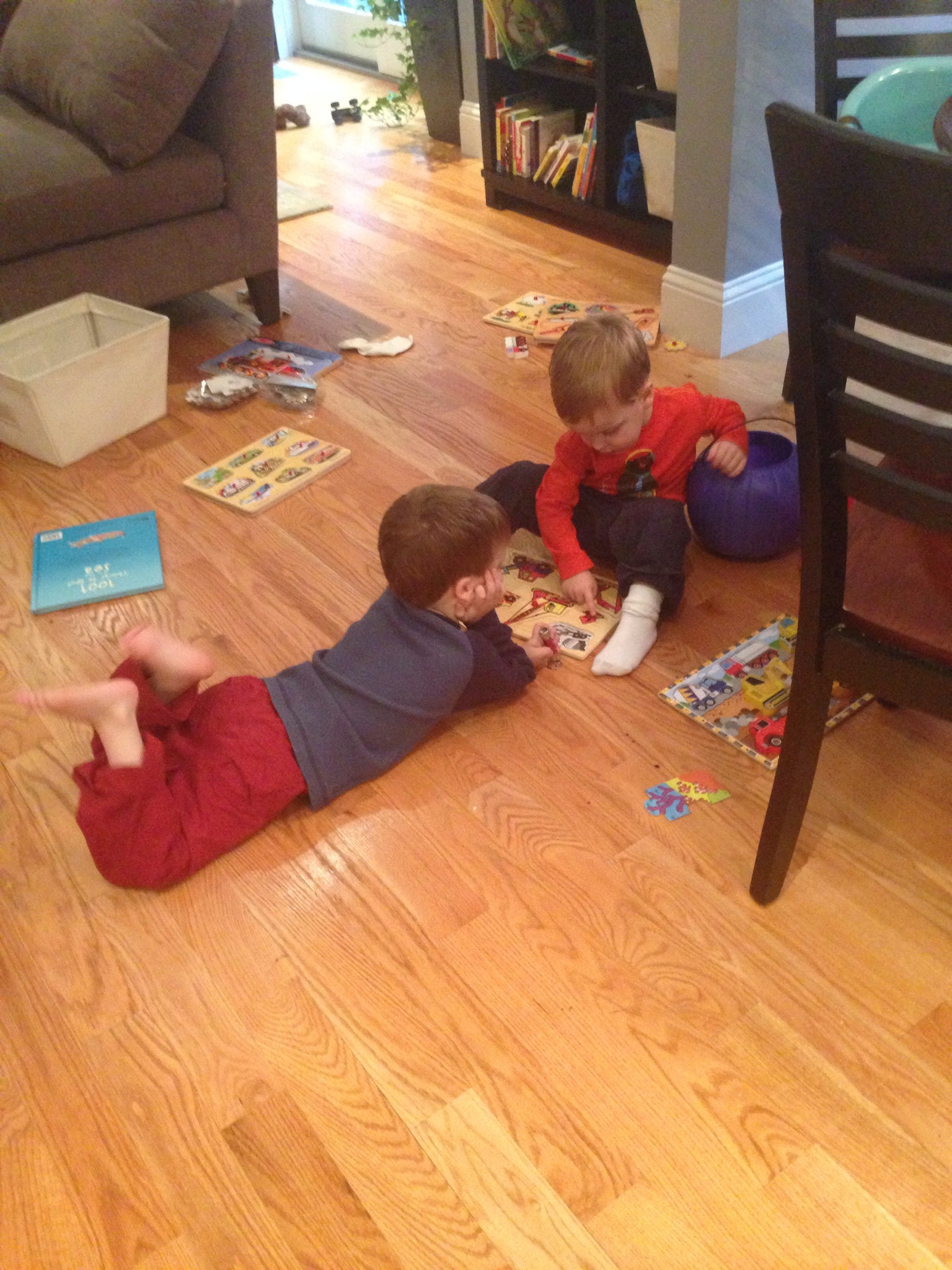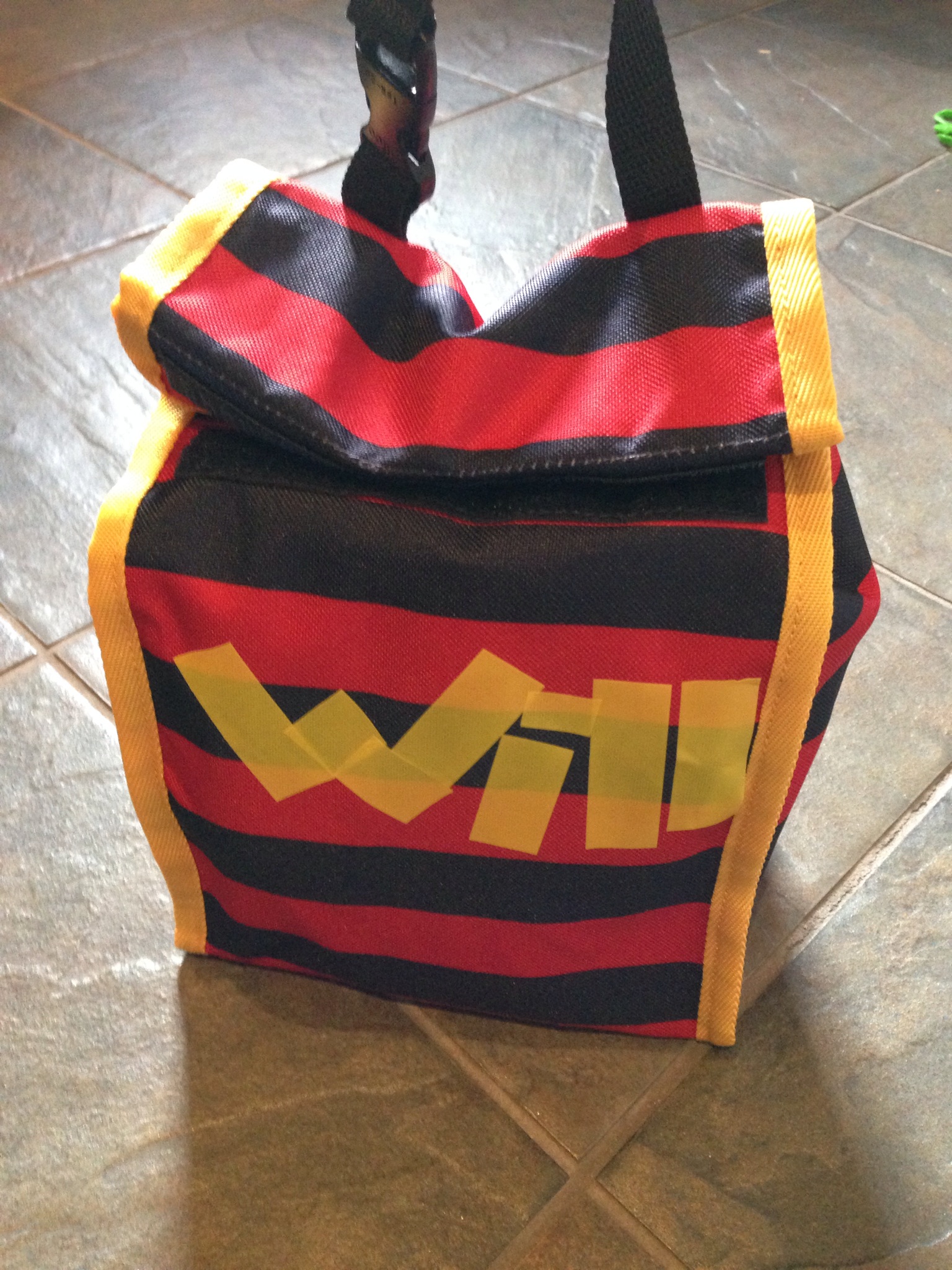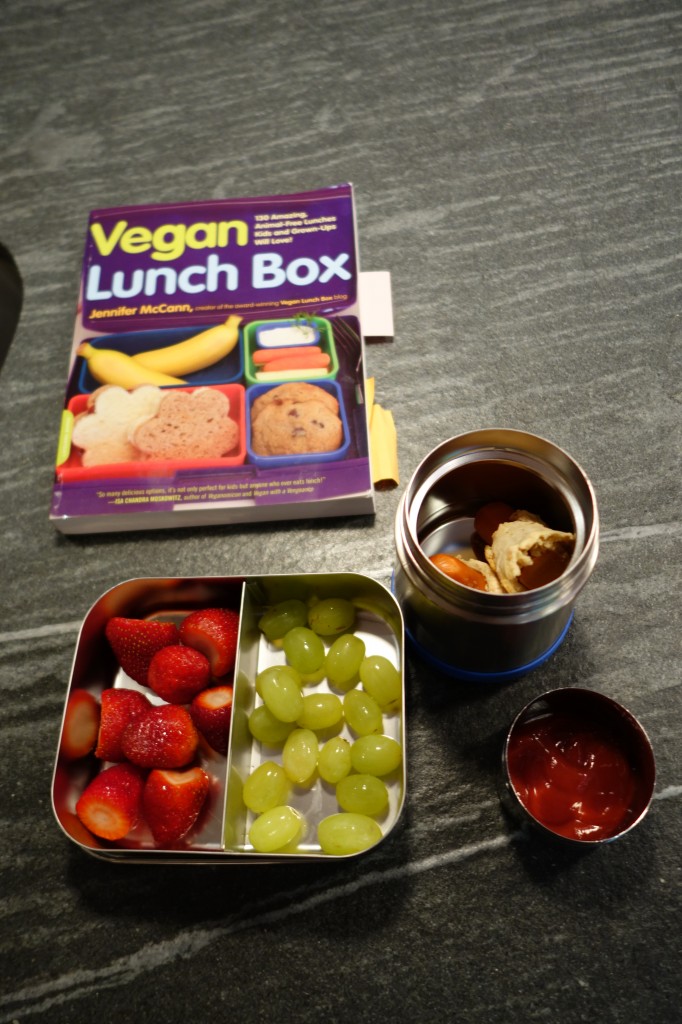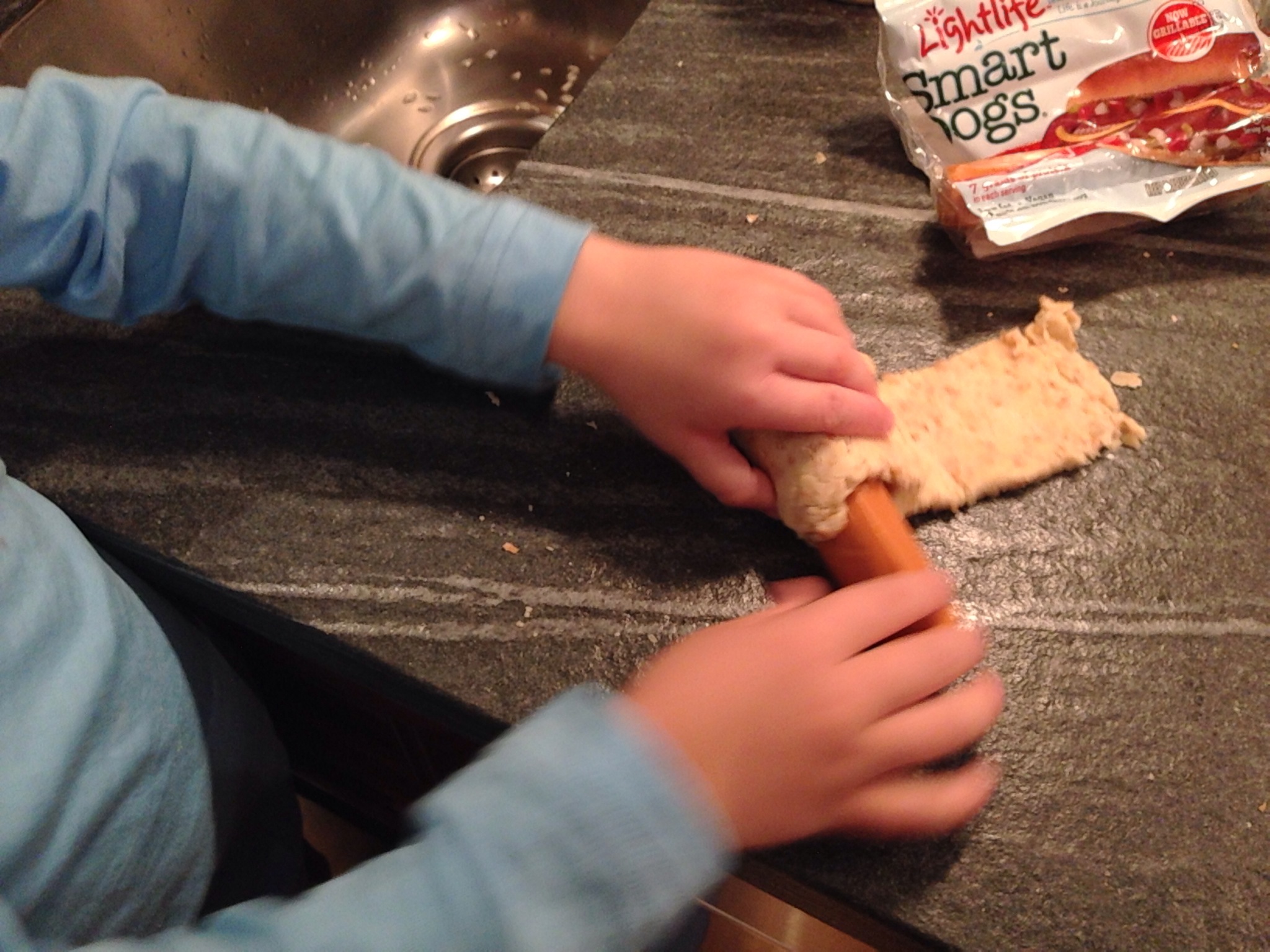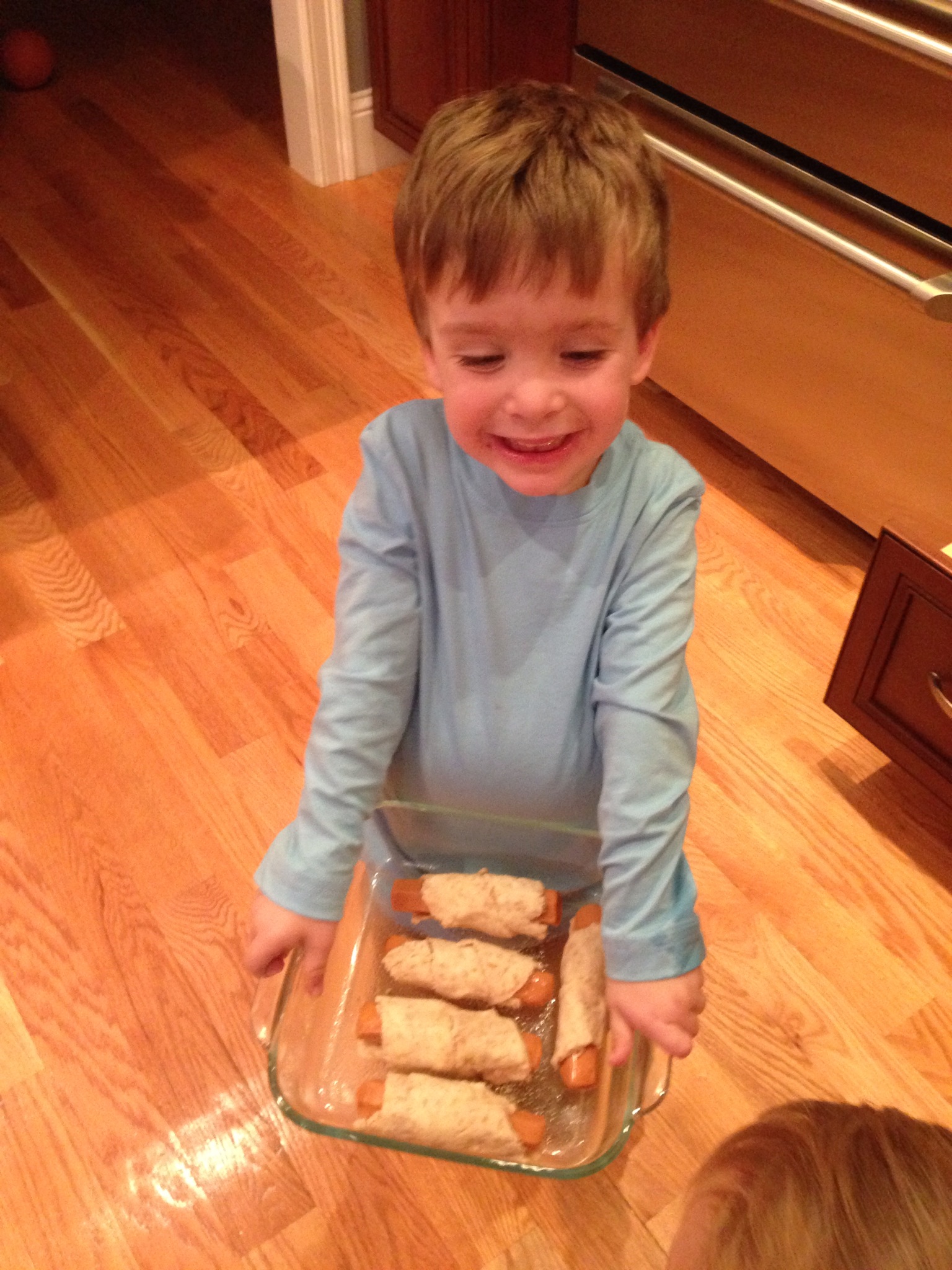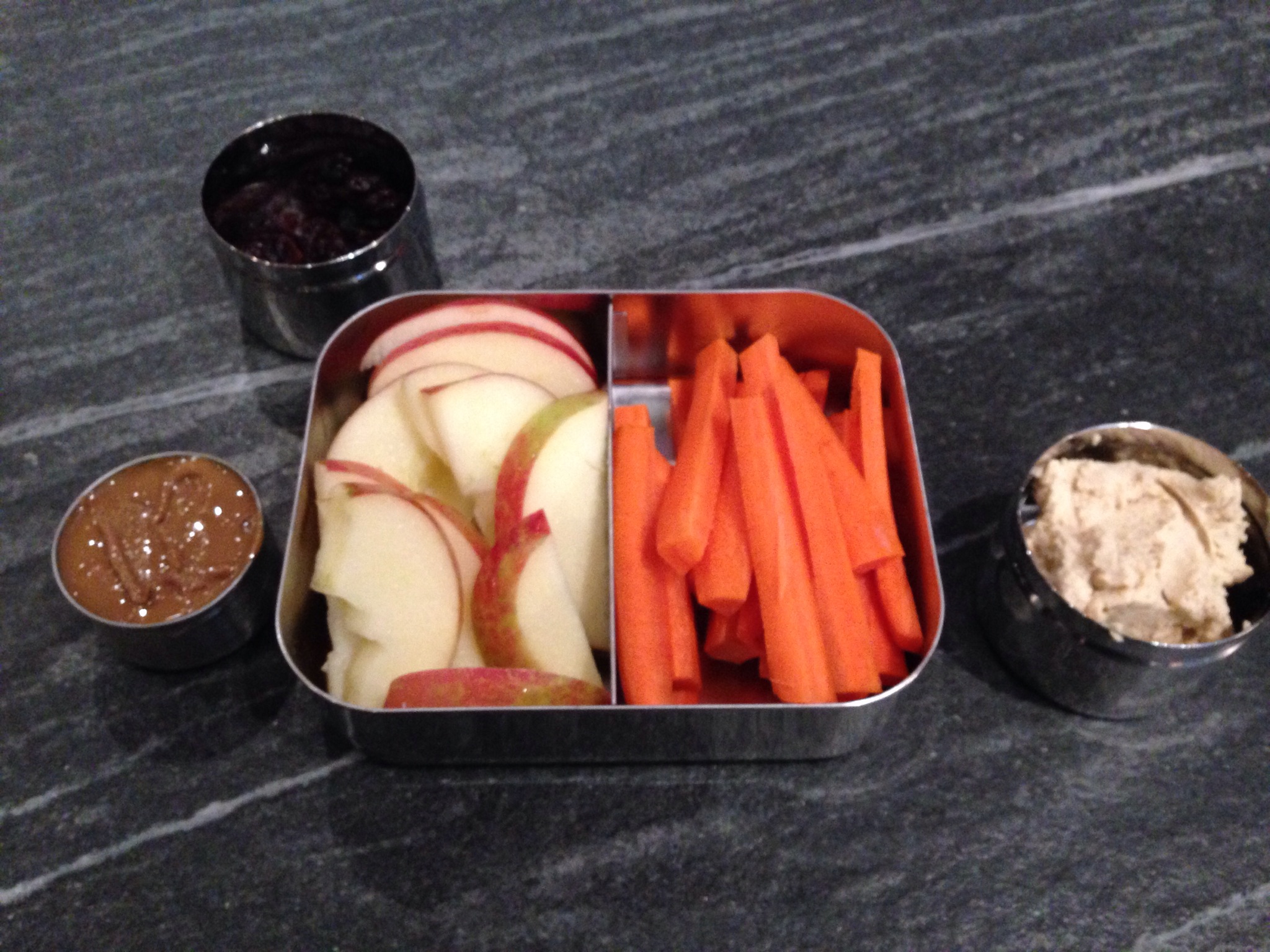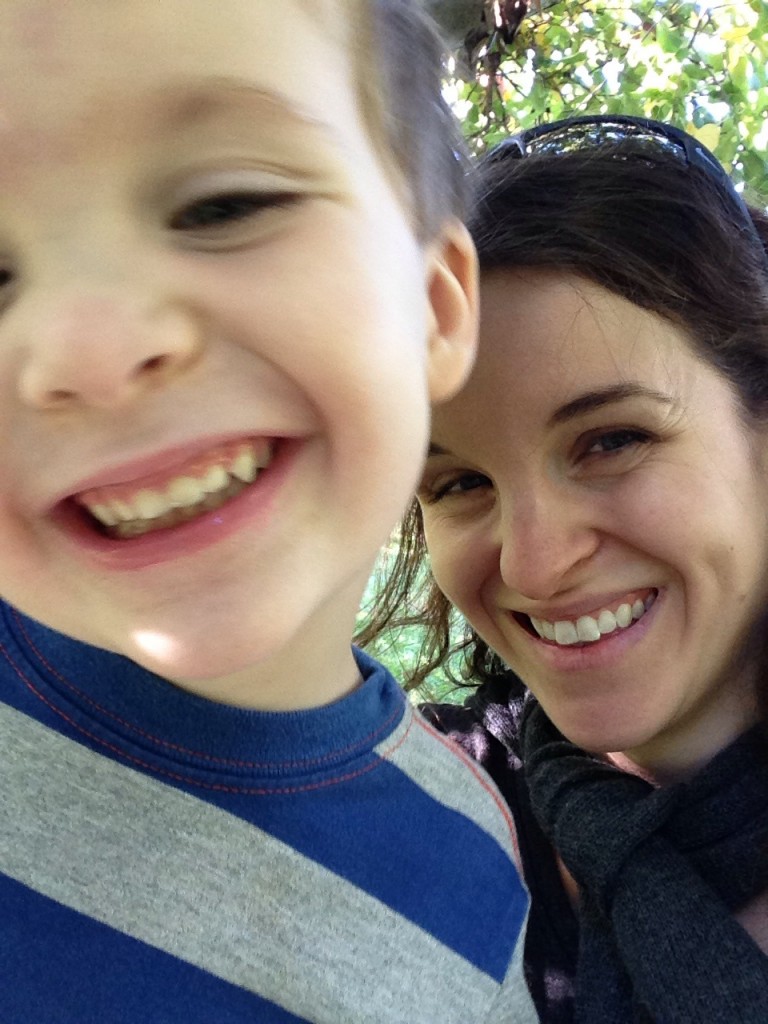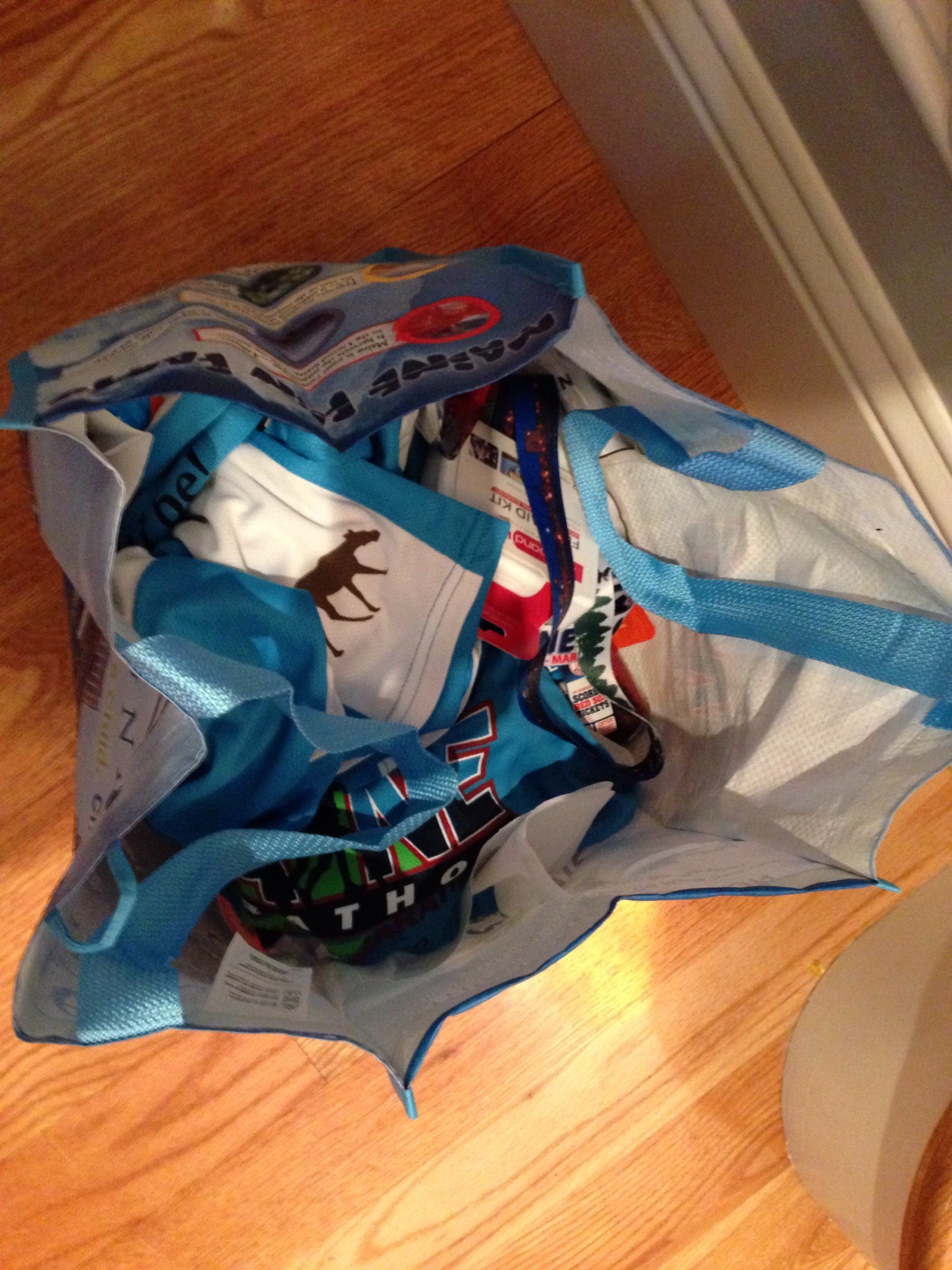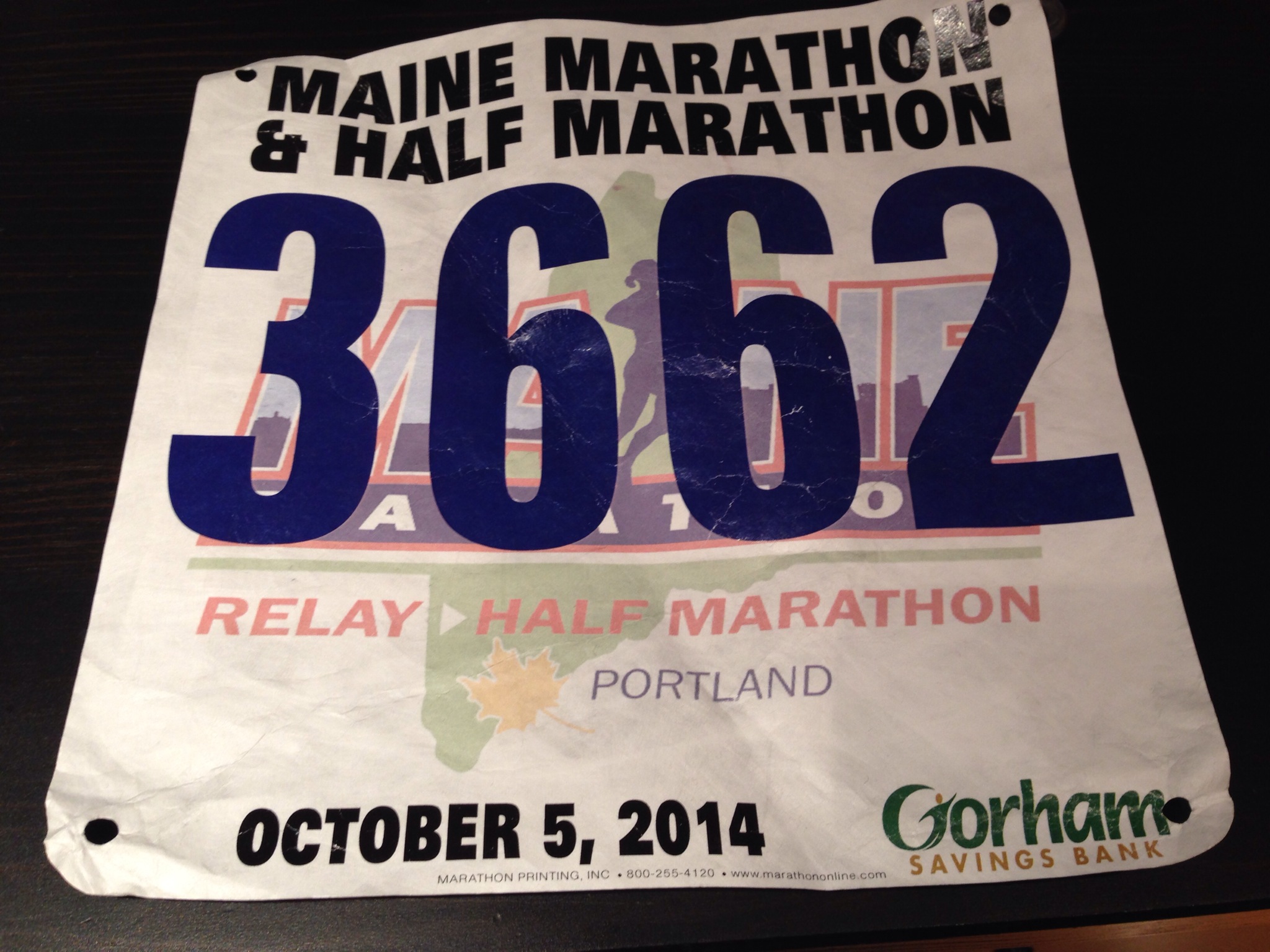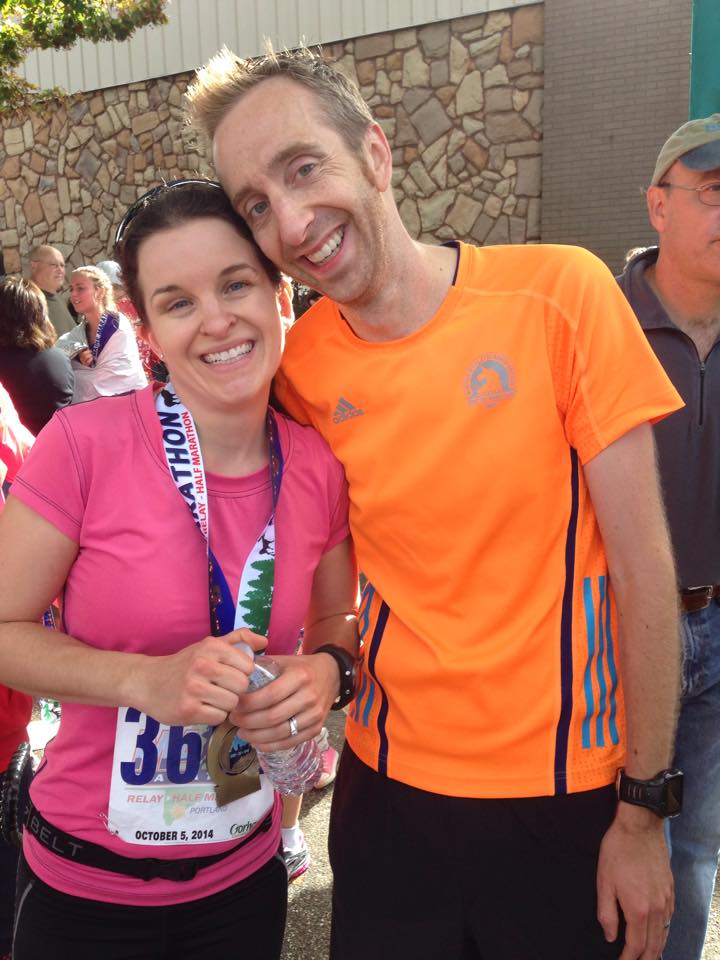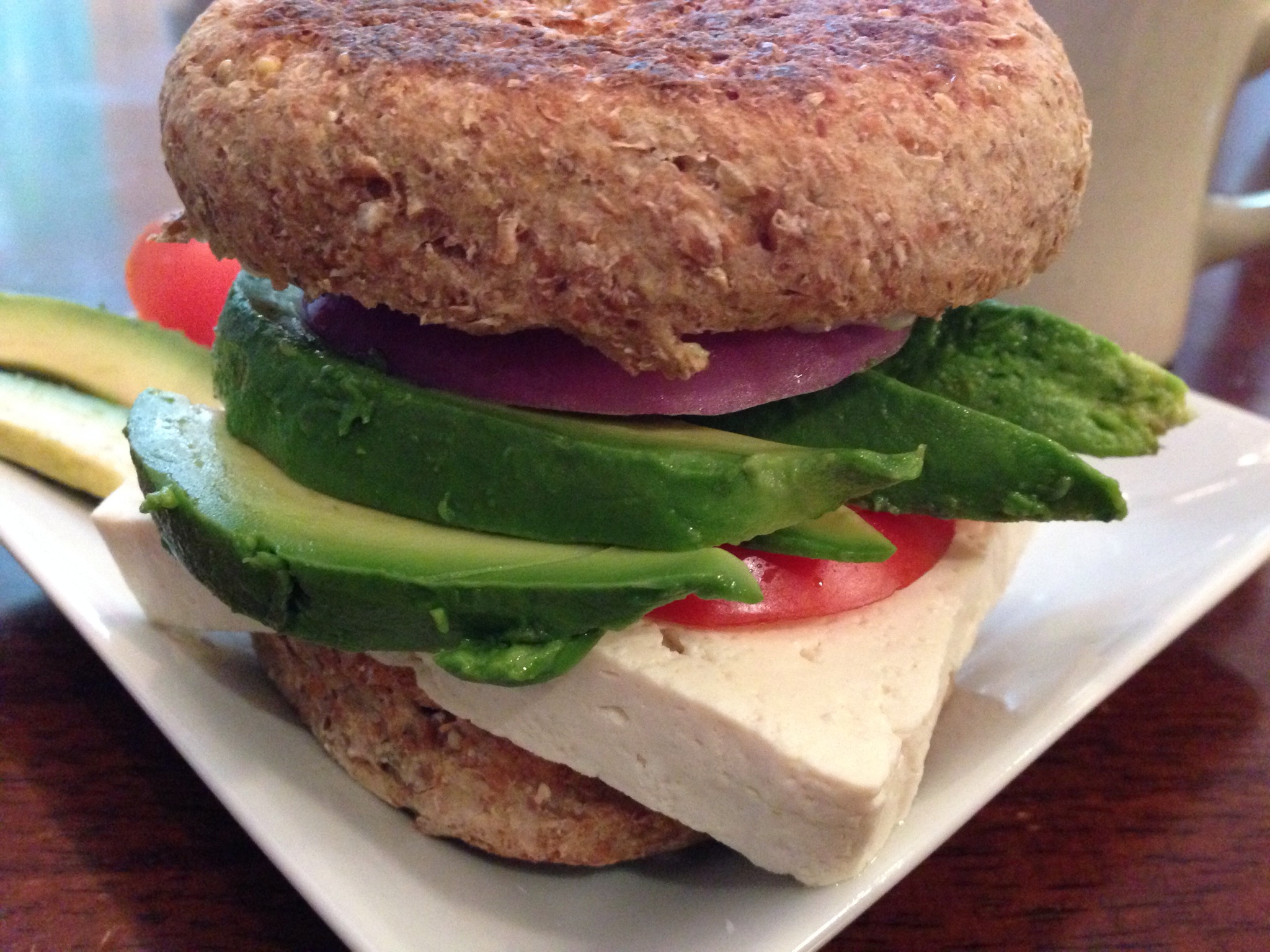
You don’t have to be vegan to know that grabbing a bacon egg and cheese sandwich on an english muffin every morning on your way to work is a BAD idea.
Finding a healthy but satisfying breakfast sandwich was a bit of a challenge. I like hummus and tomato on an english muffin sprinkled with fresh dill, but that wasn’t high enough in calories or protein for Greg. We needed something that had enough protein and healthy fats to get us through our busy mornings.
We finally found the perfect solution. We substituted tofu for egg and added avocado for healthy fats, with tomato and a little red onion for flavor. A little vegenaise or Just Mayo (so delicious that my non-vegan parents now stock it in their fridge for themselves) makes this sandwich even more delicious than a traditional breakfast sandwich. I would eat rather eat this than a traditional breakfast sandwich with meat, egg and cheese – even if you took all the health, environmental and ethical considerations out of it. It tastes fresh but satisfying, filling yet not greasy or heavy. It’s pretty much perfect.
The only problem with this breakfast sandwich is that you can’t buy it on your way to work! Ok, and also they’re not nearly as beautiful when I arrange the avocado slices instead of Greg (he’s a sandwich master).
Recipe: Our Favorite Breakfast Sandwich
Firm or Extra Firm Tofu
Small amount of chopped red onion
Avocado
Tomato
Ezekiel English Muffins
Vegenaise
Vegetable Broth
Salt & Pepper to taste
The night before: Slice your tofu into 1/2 inch thick squares about the size of your Ezekiel english muffin*, and put in a container. Cover with vegetable broth and soak overnight. One pound of tofu makes 6 breakfast sandwiches for us, with the last day having a little irregularly shaped tofu. We cut the pound all at once and leave it in the fridge in the vegetable broth, making sure we use it within 3 days. (It’s also great cubed and tossed into a stir fry.)
Morning of: Remove your tofu from the vegetable broth. You can pan sear it lightly on each side in a pan over medium heat with a little oil, OR you can microwave it for about a minute until it’s warm all the way through. I tend to microwave it, because it greatly simplifies the breakfast sandwich process and I often lose the nicely browned tofu sides in the pan, which defeats the purpose of searing the tofu.
Note: This really is excellent if you pan-sear the tofu. For a great article on how to dry-sear tofu, check out what Isa Chandra wrote on the ppk.com!
Toast your english muffins (otherwise they’ll get soggy) and put a tofu square on the bottom one. Add diced onion, sliced tomato, sliced avocado, and spread vegenaise on the top English muffin. Salt and pepper to taste if desired (I often don’t). If you want an easier sandwich to eat, you can mash the avocado instead of slicing it, then the pieces won’t slide out. Put on the bottom English muffin piece and add the tofu on top for a more stable sandwich.
Consume, and enjoy the energy boost!
*I recommend the Food for Life “Ezekiel English Muffin” because it’s a flourless, sprouted grain english muffin that not only tastes amazing, but is low on the glycemic index and high in protein. It’s a whole grain solution that doesn’t taste like cardboard, and I think we can all get behind that!
For more healthy and delicious breakfast ideas, check out my Healthy Breakfast Ideas.
